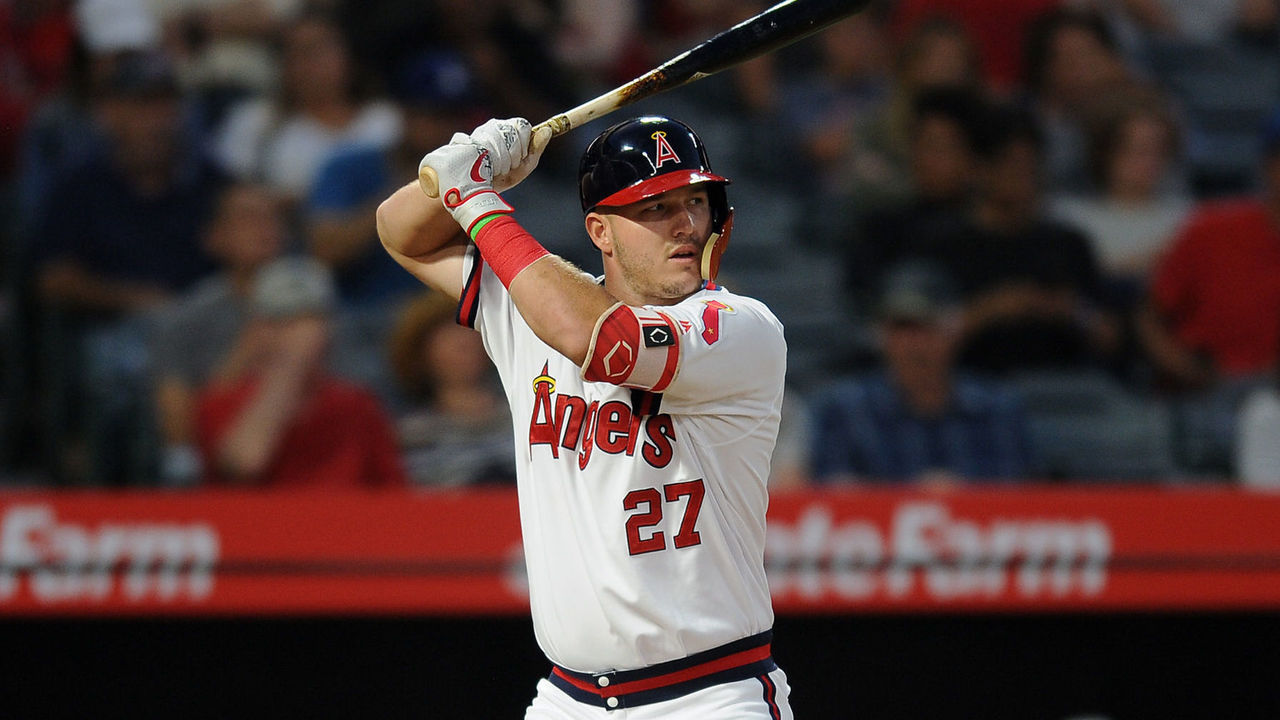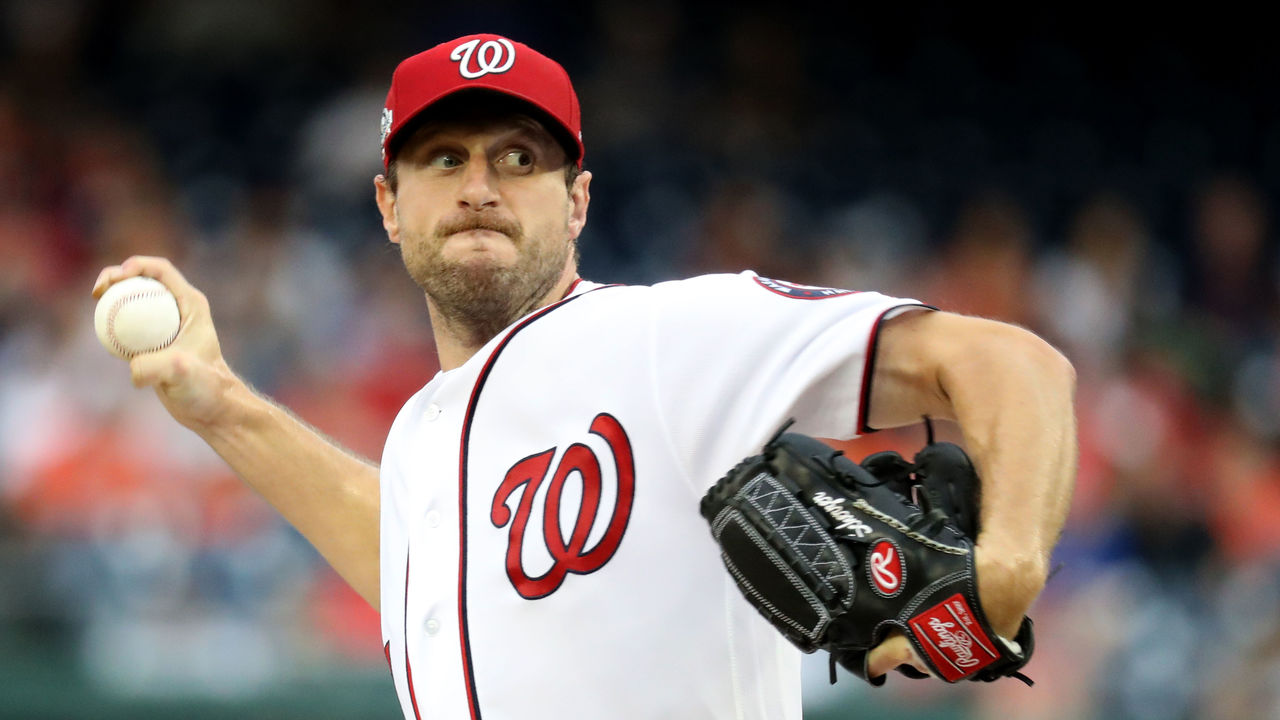MLB Fantasy: Dynasty League primer
So, you want to start a dynasty league.
Good choice - I congratulate you on your future addiction. As fun as redraft leagues are, nothing beats grabbing that prospect you've been eyeing in High-A and watching him progress into a major-league regular or even a star if you're lucky enough.
DYNASTY LEAGUE TOP 200 PLAYERS
A dynasty league can be an exhausting and rewarding endeavor. Here's everything you need to know.
What is a dynasty league?
It's a type of fantasy league where each owner keeps the majority or all of their roster from year-to-year. The parameters for keeping players can be customized, and you can make decisions on how your league will be built.
Dynasty leagues differ from standard keeper leagues with managers attempting to run their teams like a business. Where keeper leagues clearly define limits on which players can be kept, dynasty rules are typically more in-depth, giving managers the feeling they're running a real team.
How should keepers be settled?

The easiest way is to keep everyone always, but that doesn't necessarily lend itself well to parity. If this is the route you choose, you'll need to have a deep farm system. As a result, rebuilding teams will be able to stockpile prospects and top-tier clubs will be incentivized to trade away their best farmhands for meaningful players at or near their prime.
The other way you could do it - and this one gets a little more complex - is starting the league with an auction draft. Then, once all costs are set, have player salaries increase by a certain percentage every winter. For instance, say your team gets Mike Trout for $63 and keeping players means giving a 10-percent raise, rounding up. In order to keep him in the offseason, you'd have to fit Trout at $70 into your budget, which stays static from year-to-year. This adds another fun layer to the league as well, as managers aren't judging a player solely on their on-field worth, but the salary they'd have to clear in order to make it work. A free-agent acquisition budget (FAAB) would be absolutely necessary for this and would be part of a manager's overall cap space. A traditional $260 draft budget and a $130 FAAB would work fine, but keep the overall cap space less than $390 to ensure players are being dropped and recycled through waivers. Otherwise, the only thing stopping managers from hoarding players is the roster size, and that can be easy to exploit depending on how many DL spots your league has.
Remember: parity is key to keeping everyone entertained.
Scoring
The most important step is deciding how to score the league. It can be head-to-head or rotisserie, it can be categories or points.
Something fantasy football has done right for a long time is the fact it's head-to-head and points. It's easily the most exciting way to play, even if it isn't the best representation of who actually had the best team. You can curb that, though, by paying some of the league winnings to the team that scored the most overall points over the season.
I'm partial to FanGraphs' Ottoneu points system, which has its own rules for scoring, acquisition, keeping - everything. Even further, they're introducing a head-to-head format this year. It costs money to join, but it also takes care of most commissioner tasks. There are two points systems to choose from: FanGraphs or SABR. The offensive scoring is identical for each, rewarding players who slug and penalizing hitters who don't get on base. The pitching is where the difference is, with SABR scoring much more FIP-based. You can look them over here.
Strategy

It's time to talk about your approach to the draft.
Dynasty leagues tend to overrate youth and underrate experience, so remember that. As cool as it is to snag Vladimir Guerrero Jr. in the first round, knowing you'll have the young stud in perpetuity, don't forget about Joey Votto, who continues to be an elite on-base hitter into his mid-30's.
Remember, as much as you want to field a competitive team in 2029, you really want to field a competitive team for 2019. Old guys pose great value, so if they start falling a bit too far, don't be scared to roster one of the veterans.
As for the prospects you should keep an eye on, that's totally up to your preference. Some managers may skew toward MLB-ready farmhands. Others may favor high ceiling young guys. Just keep in mind, MLB-ready players like Eloy Jimenez are going to need a spot on your real roster sooner than 17-year-old Wander Franco. A good mix is best so you don't suddenly have to drop three or four rostered players to make room for prospects who might not produce right away. Jimenez clearly has more value in a dynasty league than, say, Wil Myers, but are you going to drop the latter just to make room for a 22-year-old? Save yourself from having to make too many decisions like that.
For more strategy, check out theScore's Dynasty Rankings.
Offseason matters
Perhaps the most fun part about a dynasty league is that it never really ends. Sure, there might be a month or two in the winter where you don't pay full attention, but it's also a great time to figure out where your roster can improve and broker deals that you couldn't have made in-season.
Even further, this is the time you're going to want to introduce first-year players into your league. There are a couple ways to do this, so let's start with the easiest and the one that mimics Major League Baseball the most.
Host a first-year player draft every offseason. The biggest obstacle with this is making it clear that managers can't claim drafted prospects until after your league holds its draft. For instance, Casey Mize was taken first overall in June. Your league likely won't want to hold a draft during the season - like MLB - so even though Mize ultimately signed with the Detroit Tigers after he was selected, therefore showing up in your league's available players, he needs to be clearly listed as off-limits to all managers.
Having a limit on players you can hold in your farm system will likely make this a pretty shallow annual draft. As for the amount of picks a team can make, it's best to have a set amount of rounds - like any draft - but still allow managers to skip picks if they wish. Some teams will already like the construction of their farm system and not want to add many guys - especially if they won the league and don't have a good draft position. Other managers - those who lost - will probably want to make as many picks as they can.
Alternatively, you can get really hardcore and start taking players as soon as they are draft eligible in real life. For instance, Kumar Rocker and Carter Stewart were both considered top recruits out of high school this year, but neither signed with a major-league club. Under the aforementioned system, those guys would be off-limits. But, if you want a deep farm system where managers are willing to wait years before seeing dividends, then this is really fun and rewarding. Every manager has to be invested in the league, though. Knowing high school recruits isn't for casual fans of the sport.